New Trevelyon Project
As you know, I love the drawings/designs of Thomas Trevelyon. They take me back to the Elizabethan era where I feel right at home. If I could time travel (and choose to be wealthy and healthy!) I'd go back and live in the past for a week.
One way for me to stay connected with the past is through historically inspired embroidery. My next project is a large pin cushion using four small motifs of Thomas Trevelyon.
The idea for a pin cushion comes from this portrait of the Duchess of Southhampton, which shows a large pin cushion on her dressing table. (She had an interesting life! More about that another time...)

While researching this project, I came across a wonderful web site entitled "Extreme Costuming". The author, L. Mellin, wrote a wonderful article about the use of pins in dressing an Elizabethan woman. Here is an excerpt from that article.
"I was not aware of how common these simple items were to the wardrobes of the Elizabethans. Pins were made in many sizes, from the "great verthingale pynnes" used to hold heavy skirts, to the smallest pins used to hold veils and delicate fabrics. Janet Arnold documents the pin purchases for Queen Elizabeth in a six-month period:
"Item to Roberts Careles our Pynner for xviij [18] thousand great verthingale Pynnes xx [20] thowsand great Velvet Pynnes and nyne thowsande smale hed Pynnes and xix [19] thowsand Small hed Pynnes all of our great warderobe" (Warrant dated 20 Oct, 1565)
While the number of pins for the Royal household seems extraordinary, considering the elaborate clothing effects required by the Queen and her attendants, one wonders that she didn't need more.
Pins were used to hold skirt flounces, farthingale boning, ruffs, cuffs, partlets, veils, jewels, and generally everything that needed to stay in place. They were carefully kept, and straightened and sharpened periodically. Pins were not left in clothing (oxidation of the metal will stain the fabric, and if moved carelessly, the pins could also rip the fabric), but stored in pincushions.
The well-known portrait of the Countess of Southampton shows her at her dressing table, upon which sits a large pin cushion stuffed with round-headed pins. The bag and pincushion sets in the Victoria and Albert Museum in London suggest that pins were also carried on the person to effect emergency alterations, and given as gifts.
The four small motifs I chose from Trevelyon's Commonplace Book are below.
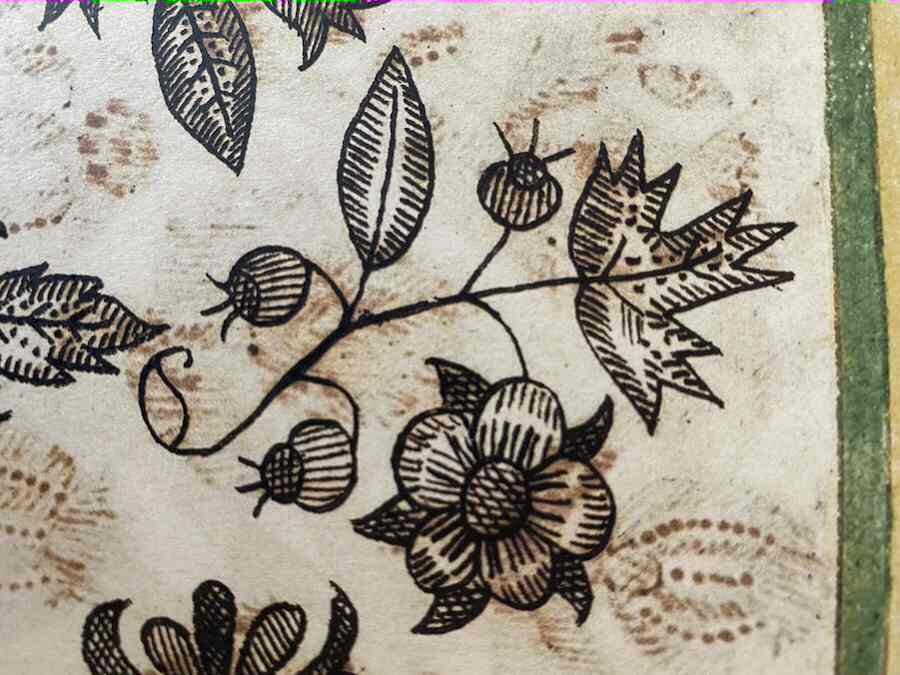
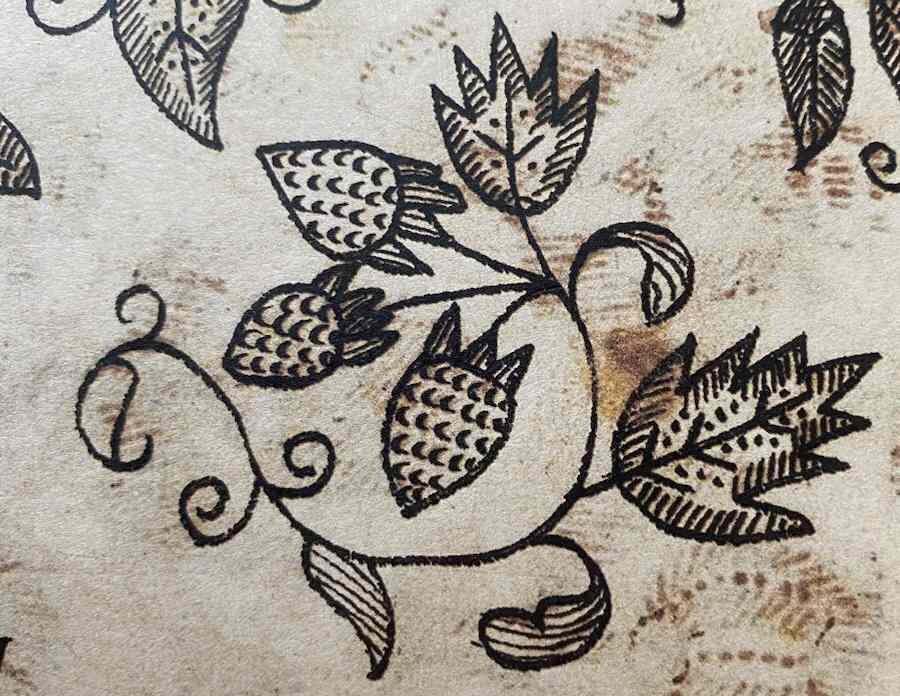
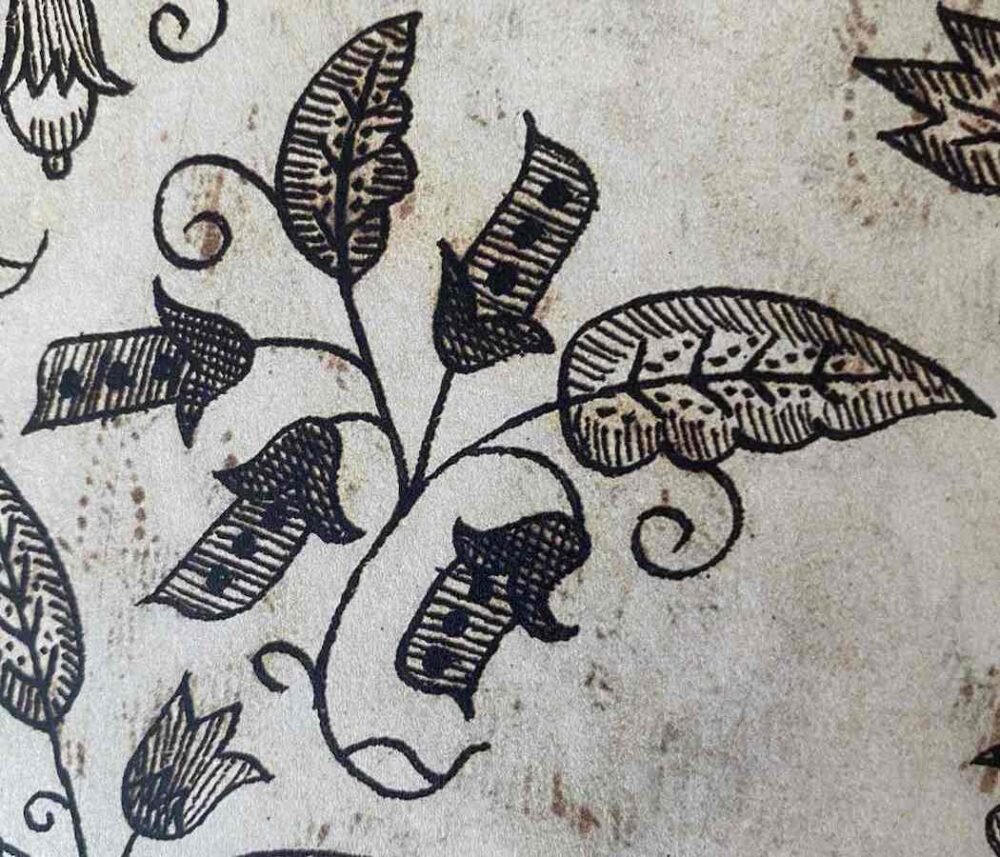
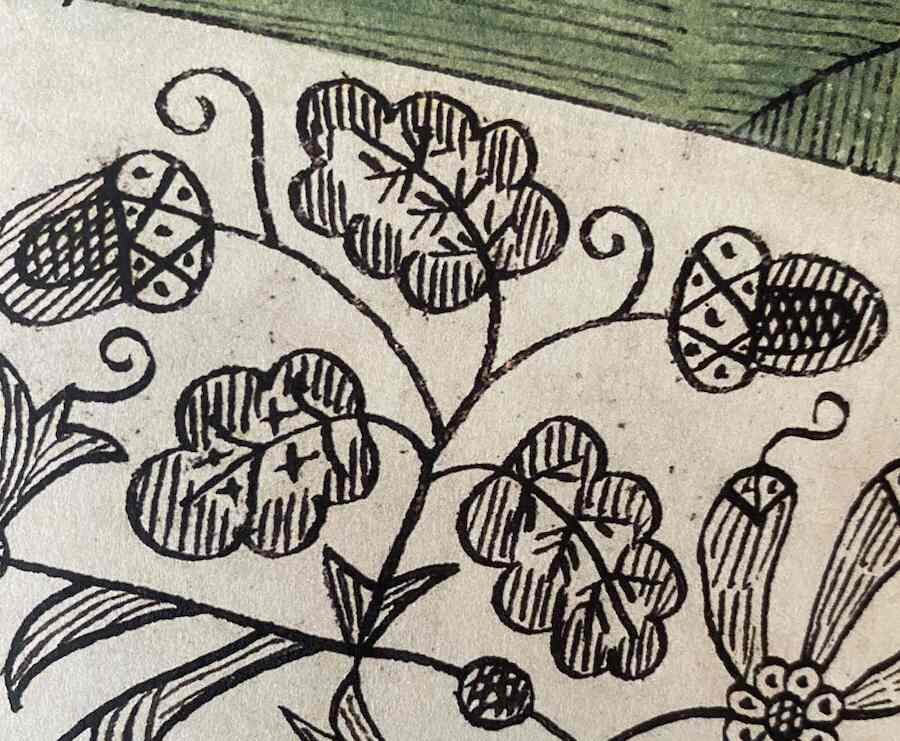
From these four images, with editing, I created a pattern. Now I'm choosing threads, fabric and stitches.
The corners of the pin cushion will have ribbon tassels just like this one from the V&A Museum in London.
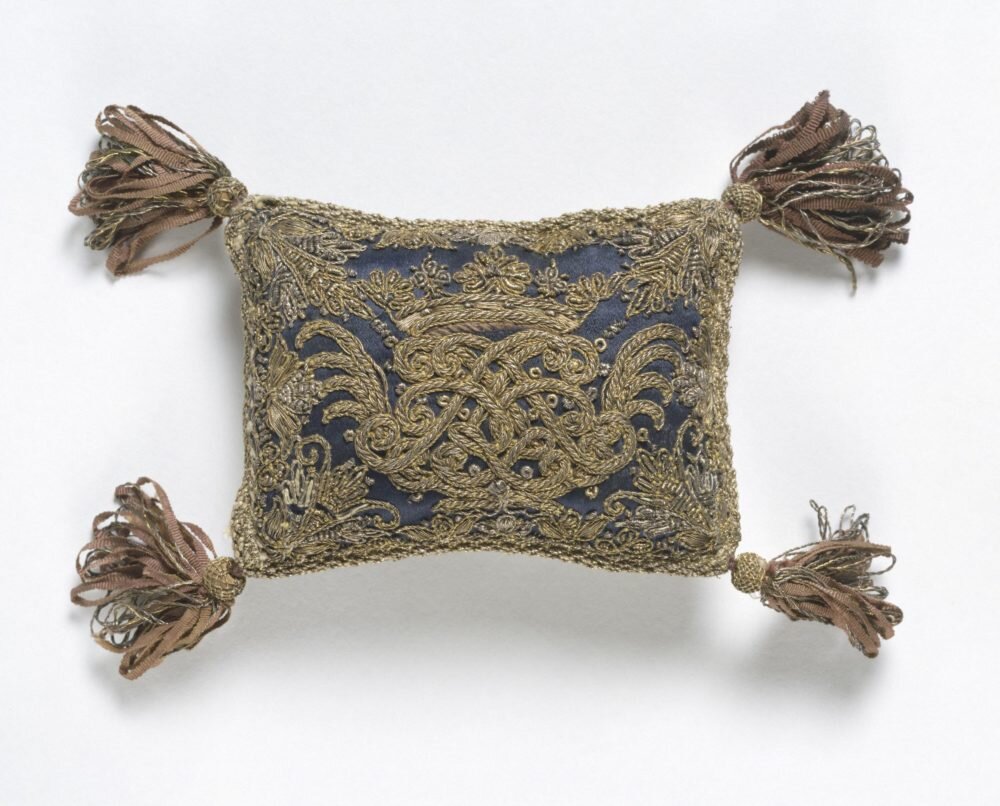
I'm planning to use Au ver a Soie d'Alger threads on linen. At first I thought I'd use silk, but then it occurred to me that perhaps a pin cushion wouldn't have been made of silk, but of linen. Then it occurred to me that it could have been made of silk - a left over piece of silk, for example. After doing more online research I decided to try stitching on both kinds of fabric to see which worked better.
Here are the colors I'm considering. Pinks and blues for peas and blueberries and golds, browns and rusty reds for strawberries and acorns.
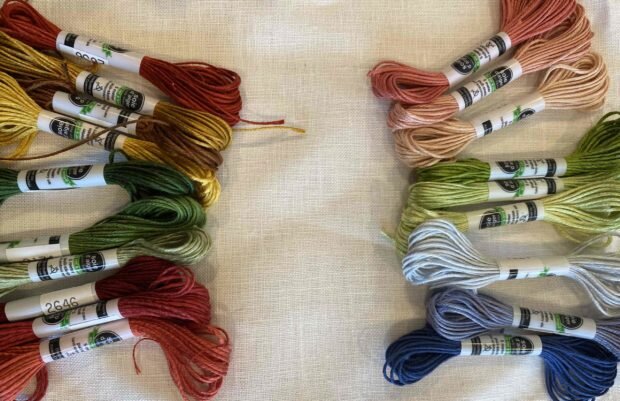
It's so good to be back in my studio again!
